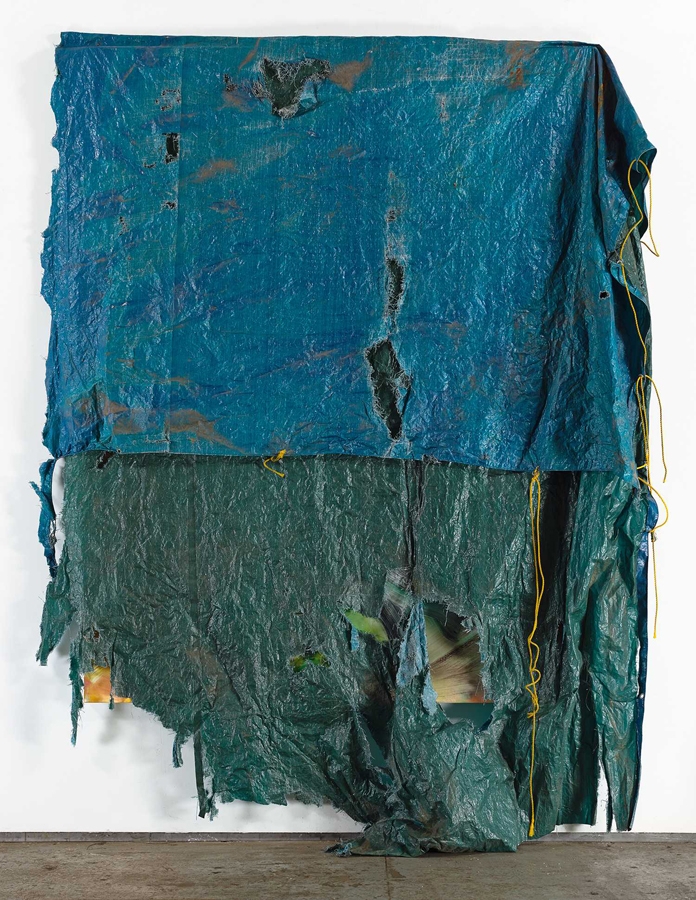For David Hammons, the context of his showing will inevitably foreground certain readings of his practice over others – a retrospective at New York’s MoMA will carry a different message to one at the Studio Museum in Harlem. His exhibition at White Cube is forced to grapple with questions of artwork and commodity, especially given the market’s recent voracious appetite for Hammons’s work.
On the ground floor are four drawings, each made by repeatedly bouncing a sullied Spalding basketball against paper. Jutting slightly out into the space, the frames have leather and cloth suitcases tucked behind, and those titled Traveling (2001–2 and 2002) cite ‘Harlem earth’ as their material. With Hammons’s city literally imprinted onto their surfaces, the drawings allude to ‘travelling’ as a basketball penalty, as well as the hopes and aspirations invested in the sport as a ‘way out’, a road to fame and fortune. The suitcases convey Hammons’s often-itinerant working practice, where the city street has acted as his exhibition space – the empty lots in Harlem where he created ‘bottle tree sculptures’ or Lower Manhattan, where in Pissed Off (1981) he documented his arrest for urinating on a colossal Richard Serra sculpture.
Downstairs are four recent paintings (all Untitled, 2014), each in a colourful, gestural AbEx style and draped with tarpaulin found on the street. The surfaces peek through the grubby sheets, forcing interplay between the painting as a coveted commodity and what could be read as its torn, damaged covering. Hammons further emphasises this relationship through his treatment of the gallery space, drawing attention to how the soiled outdoor world is dragged into the pristine white cube. Cracks outlining a large loading door are left unplastered, with one of the paintings hung directly over the line demarcating the hinges. The sliding security grills are pulled down by a third above the entrances, while the light-diffuser panels are removed and stacked in a corridor area, with The New Black (2014), an orange-painted African tribal mask, perched on top. Just as the ‘basketball drawings’ suggest movement, so does the exhibition’s staging downstairs, creating a dialogue between outside and inside, seen and unseen, refuse and artwork. Dirt Drawing (2014), a white rectangular wall space outlined by grime, distils these polarities – an artwork in its own right, or perhaps the trace of where another had hung before. Purposefully chosen by Hammons, Agnes Martin’s Untitled #9 (1999) acts as counterpoint to the works downstairs. Square and covered in subtle bands of colour, Martin’s painting also draws from the outside world (inspired by the New Mexico plains, where she lived), but with a more clean, reduced result.
Reflecting on Hammons’s mid-1970s sculptures made with grease, bones, hair and rubbish, curator Lowery S. Sims wrote in Art As a Verb (1988): ‘[He] confronts our commodity-predicated notion of the dear, the beautiful, and transforms our perception of and reception to the humble detritus of our urban society.’ While Hammons continues to imbue the street into his work, bringing with it its poor materials and concomitant sociocultural issues, the exhibition at White Cube sides closer with issues of market value – heightened by the need for a dedicated invigilator guarding The New Black and the nearby Untitled (2007), a fur tarnished with streaks of paint.
This article was first published in the December 2014 issue.
